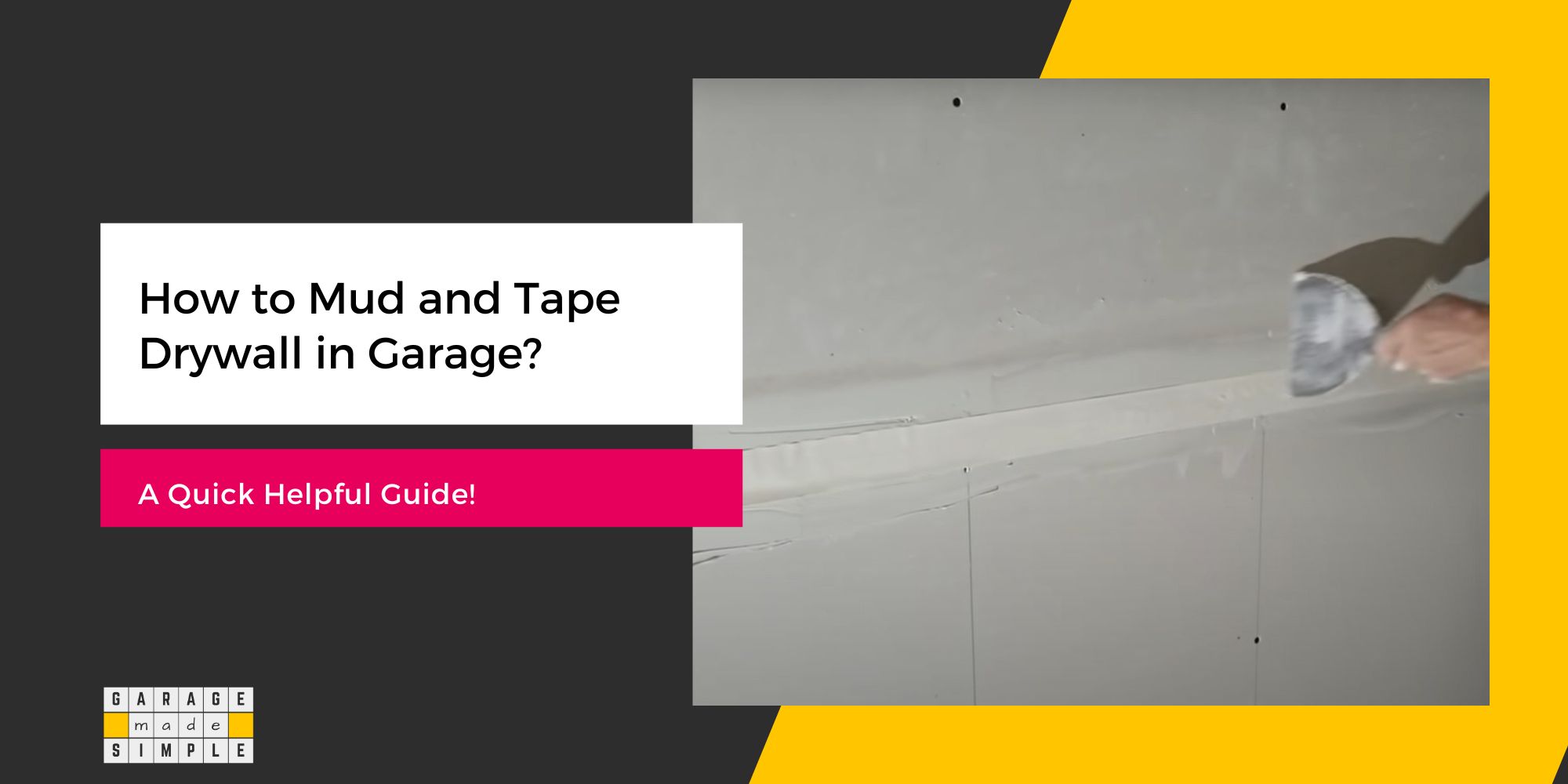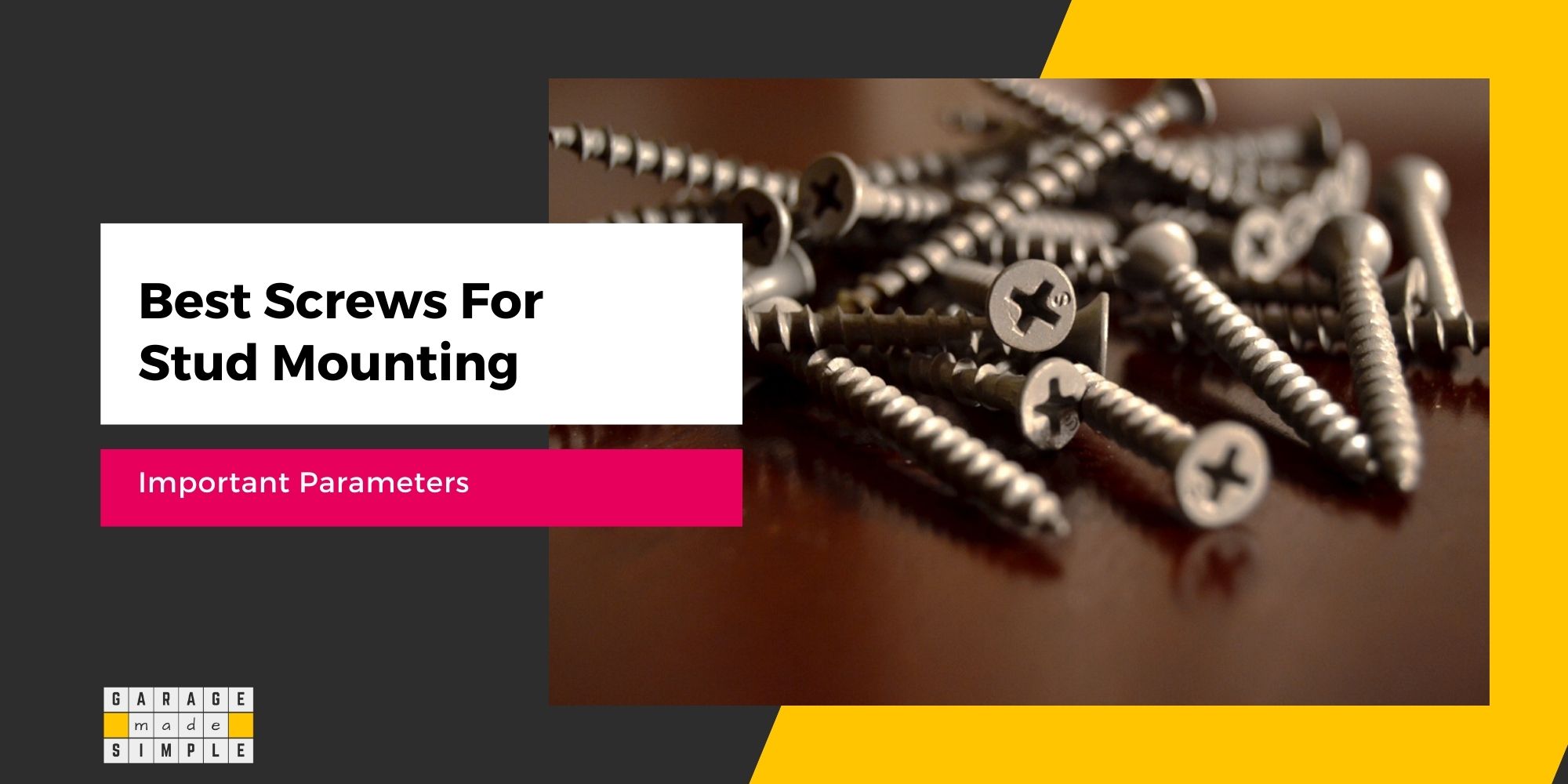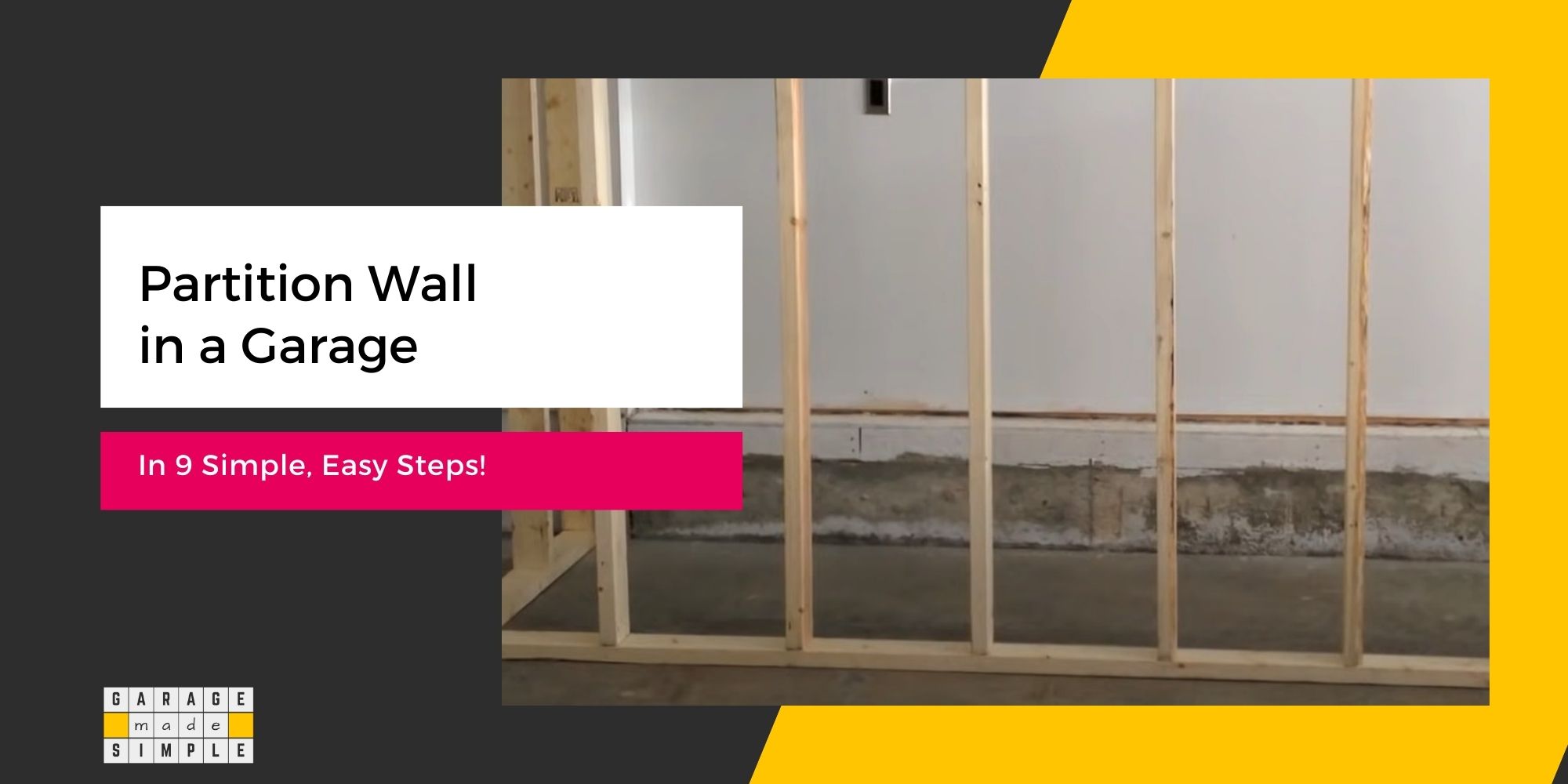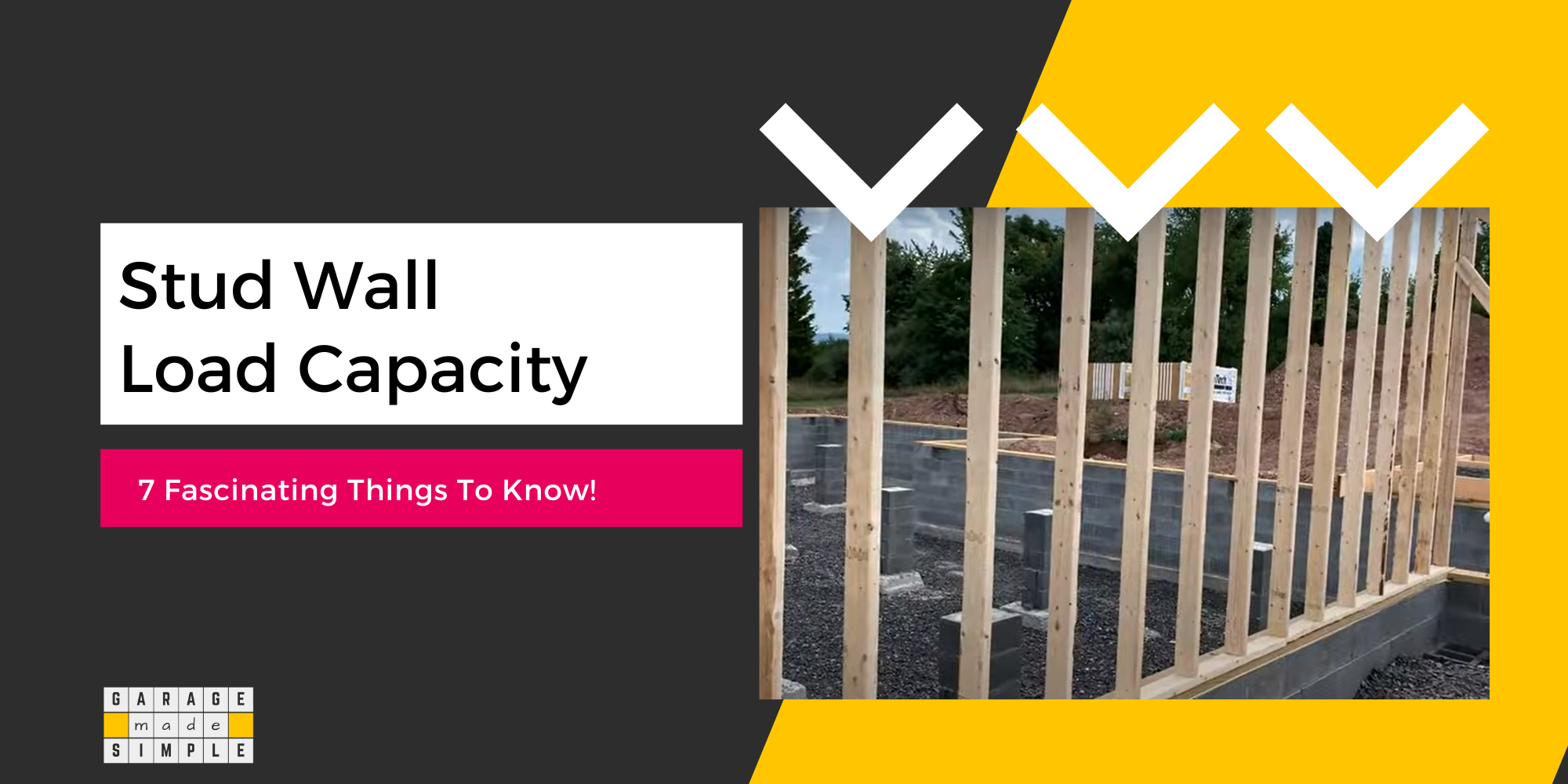Maximum Hole Size in 2×4 Stud: Best Practice by Code!
As an Amazon Associate, I earn from qualifying purchases.
What Should the Maximum Hole Size in 2×4 Stud be?
When building or renovating a garage you will need to drill holes in studs to run electrical wiring, plumbing lines, or HVAC ducts. But, what is the maximum hole size in 2×4 stud permitted by Code?

Wall stud modifications, such as drilling holes, can compromise the structural strength of the frame if done incorrectly. The larger the hole, the lower the 2X4 wall load bearing capacity.
Drilling or notching wall studs without proper understanding could lead to structural failure and costly repairs.
Here I cover everything you need to know about the maximum hole size in 2×4 studs, including code requirements, the differences between load-bearing and non-load-bearing walls, and when to reinforce a stud.
The Role of Wall Studs in Garage Construction
2×4 studs are the skeletal system of wood-framed garage walls. Together, the 2×4 vertical studs, the top plates, and the bottom plates maintain the wall’s shape and stability.
Whether you’re framing a new garage or installing plumbing and electrical wiring, it’s essential to understand how modifications like drilling holes or notching can impact the wall’s performance.
Load-Bearing vs. Non-Load-Bearing Studs
- Load-Bearing Studs: Support the roof, floor joists, or upper walls. Modifying these requires strict compliance with building codes to prevent structural failure.
- Non-Load-Bearing Studs: Used for partition walls. While modifications are easier, weakening these studs could still affect plumbing or electrical installations.
Why Modifications Matter
Cutting, drilling, or notching reduces a stud’s structural capacity. In load-bearing walls, improper modifications can cause sagging or shifting.
Reinforcements, such as sistering or installing nail stop plates, restore strength and meet code requirements.
Knowing the type of stud and planning modifications properly ensures a safe, durable frame for your electrical, plumbing, or HVAC projects.
IRC Code for Holes in Studs
Section 602.6 of 2021 International Residential Code (IRC) covers the requirements regarding “drilling and notching of studs”. Based on the code:
The hole diameter can not exceed 40% of the stud depth in the case of a load-bearing stud. In other words, the maximum hole size in 2X4 stud can not exceed 1 ⅜”.
The diameter can be increased to 60% of the stud depth (around 2 ⅛” for a 2X4 stud) provided the stud is doubled. No more than 2 successive studs are permitted to be doubled.
Moreover, the distance between the edge of the garage wall stud and the hole edge should not be less than ⅝”. The hole can not be in the same section as a notch or cut.
The requirements are a little less stringent for a non-load-bearing stud. The hole diameter can be 60% of the stud depth (around 2 ⅛” for a 2X4 stud). Doubling of the stud is not required.
Other conditions remain the same. So, the distance between the stud edge and the hole edge should not be less than ⅝”. The hole can not be in the same section as a notch or cut.
IRC Code for Notches or Cuts in Studs
For certain applications, you may not need to drill a hole. Instead, you may need to make a notch or a cut in the stud. Can you do that and how much can you cut into a stud?
You can not make a cut greater than ⅞” in a load-bearing 2X4 wood stud. The code does not permit the cut to be greater than 25% of the stud depth for a load-bearing stud.
For a non-load-bearing 2X4 wood stud, say in a garage partition wall, the code permits the cut to be equal to or less than 40% of the stud depth. A cut equal to or smaller than 1 ⅜” is acceptable for a non-load-bearing 2X4 wood stud.
A notch or a cut in a stud compromises stud wall load capacity, but is often a requirement. You will be fine, as long as you follow the code guidelines.
You need to reinforce the affected stud if the notch exceeds the code requirement. Sistering or bracing are techniques for strengthening an existing stud.
The Complete IRC Code for Drilling & Notching of Studs
When modifying 2×4 studs, following building codes ensures the wall maintains its structural integrity.
Section 602.6 of 2021 International Residential Code (IRC) covers the requirements regarding “drilling and notching of studs”. Reading the code will answer your query regarding the maximum hole size in a 2X4 stud.
I have summarized the code requirements in the table below so that you have easy access:
| Load Bearing Stud | Non-Load Bearing Stud | |
| Hole | * Max Dia < 40% of stud depth * Distance between hole edge and stud edge must be < ⅝” * Hole can not be in the same section as a notch *Dia between 40% – 60% requires doubling of stud * Not more than 2 successive doubled studs with bored holes permitted. | * Max Dia < 60% of stud depth * Distance between hole edge and stud edge must be < ⅝” * Hole can not be in the same section as a notch |
| Notch | * Cut must be < 25% of stud depth | * Cut must be < 40% of stud depth |
NOTE: The actual dimensions of a 2X4 stud are 1 ½” X 3 ½”. In other words, the stud depth is 3 ½”.
For a 2X4 stud (depth 3 ½”), the table below can be helpful as a ready reckoner:
| In %age | In Inches |
| 25% | ⅞” |
| 40% | Around 1 ⅜” |
| 60% | Around 2 ⅛” |
DEWALT XTREME 12V MAX* Cordless Drill / Driver Kit, 3/8-Inch
DEWALT XTREME 12V MAX* Cordless Drill
This cordless drill is compact and performance-packed, ideal for precision applications like drilling small pilot holes. It accepts up to a 12-inch spade bit.
At only 5.97-inch length, it is packed to perform with a 2-speed transmission. It also features a bright LED light on the foot to illuminate work areas.
Drilling Holes vs. Notching Studs
Knowing when to drill holes or notch studs can help you make smarter decisions when installing electrical wiring, plumbing, or HVAC components.
Drilling Holes in Studs
- Best Use: Ideal for running electrical wires, plumbing pipes, or small HVAC lines.
- Code Guidelines: Holes must stay within 40% of the stud width (1.4 inches for 2x4s) and at least 5/8 of an inch from the edge.
- Reinforcement Tip: Use nail stop plates to protect wires from accidental damage by screws or nails.
TIP: The holes in the studs let you run the Romex electric wiring, hidden and protected, behind the drywall.
Notching Studs
- Best Use: Necessary when running larger HVAC ducts or pipes that can’t fit through holes.
- Code Guidelines: Notches can’t exceed 25% of the depth for load-bearing studs and 40% for non-load-bearing studs.
- Risk: Notching reduces structural capacity more than drilling, so reinforcement may be required with sistered studs or steel plates.
TIP: The HVAC unit is quite often installed in the garage. Notching the wall stud lets you run the ducts with ease.
Holes vs. Notches: Which Is Better?
- Holes are generally safer since they retain more structural strength.
- Notches should be used sparingly, with reinforcement to maintain structural integrity.
Make the correct choice between holes and notches to safely complete plumbing, HVAC, and electrical projects while avoiding structural damage.

Holes and Notches in Joists, Rafters, Etc.
Modifying other framing elements, like joists, rafters, and engineered lumber, requires special care since improper cuts can weaken the entire structure. Each component follows specific guidelines, just like studs.
Cutting Holes in Joists and Rafters
- Floor Joists:
- Holes must not exceed 1/3 of the joist depth.
- Avoid placing holes near the middle span or ends where the joist carries the most stress.
- Roof Rafters:
- Similar rules apply—holes should be away from stress points to prevent sagging or roof deflection.
Notching Joists and Rafters
- Notches must stay within 1/6 of the joist depth and should not be cut near the ends.
- Reinforce notches in load-bearing rafters using steel plates or by sistering additional rafters.
Wood I-Joists and Engineered Lumber
- For engineered products like I-joists, always follow the manufacturer’s guidelines.
- These materials have pre-designated areas for holes to maintain structural strength.
Do not modify joists, rafters, or I-joists without proper reinforcement. Always follow building codes and consider professional advice when cutting these components.
Best Practices for Drilling and Cutting Studs
Following a few best practices ensures your modifications won’t compromise the structural integrity of your garage walls.
Key Takeaways
- Follow Building Codes: Stick to the 40% hole size limit for 2×4 studs (1.4 inches) and respect notching limits.
- Know Your Wall Type: Understand whether the stud is load-bearing or non-load-bearing, as this affects how much you can drill or notch.
- Reinforce When Needed: Use sistering studs or nail stop plates to restore strength if larger holes or notches are necessary.
- Plan for the Future: Properly align holes for plumbing, electrical, or HVAC components to avoid intersecting with other elements like drywall screws or framing nails.
When in doubt, consulting a structural engineer or contractor ensures that your work complies with building codes and preserves the structural capacity of your walls.
Thank you very much for reading the post. I do hope you found it informative and useful.







